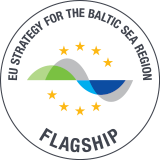Urban area
Nykøbing Falster is part of Guldborgsund municipality and the biggest city of the island Falster. In the end of the nineteenth century the harbour in the city lost its importance as an industrial centre and several factories and businesses closed in the city. Lindholm is situated in the eastern part of Nykøbing Falster – in the outer Østerbro. The Lindholm area is very close to town, forest and water. However, the area is encircled by heavily trafficked roads and the formerly railway track to Gedser.
Population
In general, all Lolland-Falster has a high unemployment rate and low house prices compared to the rest of the country. In Guldborgsund the unemployment rate is about 4.8 per cent (2016). Lindholm has a 145,000 m2 residential area with a total of approx. 1650 residents. About 12 years ago, 37% of the citizens in Lindholm had other ethnic origin than Danish. Today it has increased to about 50% percent of the citizens. In Lindholm the citizens talk more than 25 different languages. In 2016, 351 children lived in the residential area of Lindholm. The point of interest – Lindeskovskolen has a high proportion of bilingual pupils (around 85 percent bilingual pupils in 2019 – 17 different nationalities)
Challenges identified
Different stakeholders in the city experience, the fact that Lindholm has a negative image as well of some of the intuitions. For example, the local school, Lindeskovskolen, and the cultural center for youth, Kulturfabrikken. This image creates social division and pure social cohesion between Lindholm and the rest of Nykøbing Falster. In 2017 Lindholm was added to the ghetto list by the Ministry of Transport, Building and Housing. The residential area meets 3 out of 5 criteria in order to be on the ghetto list, which point to the low employment rate, concentration of immigrants and descendants from non-western countries and the education level.
There have been various attempts to involve the citizens of Lindholm in different local projects. It has been a challenge to engage the parent generation in the cultural activities. It is also being stressed, that attempts to involve the citizens of Lindholm in projects and meetings in the past has failed, which has created a resistance to new projects in the area.
Visions and aims
There is a common understanding across the baseline interviews, that the area’s negative image does not match the area’s reality and positive potential. The area is today a peaceful area and well-functioning in many ways, despite social and cultural challenges in the city:
- How to create and increase cultural encounters or new narratives between citizens/parents in Lindholm and Nykøbing as the central challenge?
- How to show more nuances/perspectives of the citizens of Lindholm instead of a homogeneous image of Lindholm?
- How to ensure a successful process of co-creation/ engagement-process in Lindholm – to attract and engage parents in Lindholm?
Cultural planning approach
Guldborgsund has a lot of different resources, organisations and future projects, which aim to develop Lindholm from a cultural and participatory perspective. The different stakeholders don’t only have intentions to change the city in the future, but many already have a lot of experiences and ongoing projects, which could support a cultural planning process in Lindholm.
Cultural stakeholders in the area are quite strong. The holistically perspective on change and decision-making in the city, also include the children as an important actor in the city as well as cooperation across public and private initiatives. The cultural perspective in the city is mostly participatory, which will be elaborated further down.
“The problem is not so much the place/ghetto itself, but the negative debate and conceptions about Lindholm. I see a lot of positive things going on in Lindholm.” – Mette Lima, Leader, Culthus
Documents
Diary of Guldborgsund click here.
Process booklet click here.
Baseline study click here.








